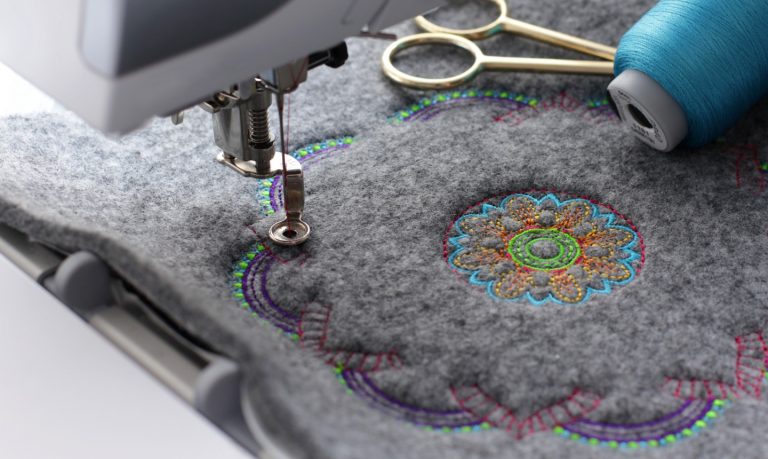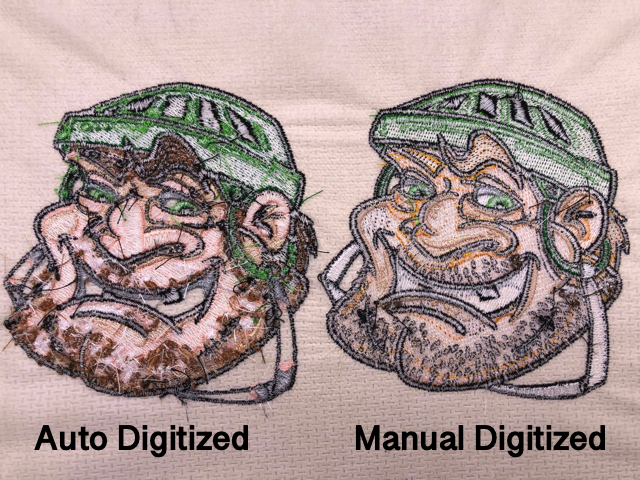Customized Digitizing for Embroidery: Customized to Your Needs
Customized Digitizing for Embroidery: Customized to Your Needs
Blog Article
Explore Different Sorts Of Needlework Digitizing Methods
Embroidery digitizing has evolved substantially for many years, supplying a myriad of methods to bring styles to life in the digital realm. From the complex virtuosity of typical hand embroidery digitizing to the precision of the boxing strategy, and the comfort of auto-digitizing software program programs, the choices are huge. The realm expands to extra advanced strategies like photorealistic needlework digitizing and the interesting world of 3D embroidery digitizing. Each strategy brings a distinct set of opportunities and obstacles to the table, making the exploration of these methods an engaging trip for those in the embroidery globe.
Typical Hand Embroidery Digitizing
Conventional hand needlework digitizing includes the process of transforming complex hand-stitched designs into digital layouts for device needlework. This strategy needs proficient artisans to carefully analyze the handcrafted design and then utilize specialized software program to recreate it in a digital format. Each stitch, color, and detail needs to be meticulously equated to make certain that the essence of the initial hand embroidery is preserved in the digital version.
Among the vital challenges of typical hand needlework digitizing is catching the intricacies and subtleties of the handmade design. Digitizing for Embroidery. Craftsmens need to have a deep understanding of various needlework methods, such as satin stitch, chain stitch, and French knots, to accurately replicate these strategies in the electronic world. In addition, they require to have an eager eye for information to make sure that the digital style keeps the exact same level of creativity and workmanship as the initial hand-stitched item
Punching Method
To perfectly transition from traditional hand needlework digitizing to the boxing method, craftsmens need to currently concentrate on transforming the elaborate digital styles right into instructions that embroidery machines can interpret. The boxing technique includes using specialized software application to produce digital data which contain commands for the embroidery maker to adhere to. This procedure requires a deep understanding of not simply the design itself but additionally the capabilities and limitations of the needlework maker.

Auto-Digitizing Software Programs
Embroidery digitizing has been changed by the advent of auto-digitizing software application programs, supplying craftsmens with advanced devices to transform electronic designs right into embroidery device directions effectively. Auto-digitizing software program programs utilize algorithms to examine electronic pictures or vector data and create embroidery designs immediately. These programs enable quick and precise conversion of detailed designs right into stitch patterns, saving time and initiative for embroiderers.
One of the vital advantages of auto-digitizing software is its easy to use interface, making it accessible to both newbies and seasoned digitizers. These programs commonly include functions such as stitch editing tools, thread shade matching, and the ability to preview the final embroidered style. In addition, auto-digitizing software can handle complex styles with numerous colors and detailed details, producing top quality needlework documents Discover More Here suitable for numerous garments and textile projects.
While auto-digitizing software provides comfort and performance, it is vital for customers to understand the limitations of automated digitizing. Fine-tuning and hand-operated modifications may still be called for to attain the desired needlework top quality, specifically when taking care of elaborate or special designs. By leveraging the capacities of auto-digitizing software together with hand-operated digitizing methods, artisans can boost their embroidery digitizing process and create magnificent embroidered items.
Photorealistic Needlework Digitizing
Making use of sophisticated digital imaging strategies, achieving photorealistic cause embroidery digitizing has actually come to be a desired skill amongst modern artisans. This method includes converting high-resolution images right into elaborate stitch patterns that closely imitate the initial design, leading to embroidery items that exhibit lifelike information and deepness.
To accomplish photorealistic embroidery digitizing, artisans have to possess an eager eye for detail and a thorough understanding of how different stitch types and thickness can impact the last result. By thoroughly drawing up each shade and color in the photo, embroiderers can develop an electronic data that overviews the embroidery machine to duplicate the nuances of the original image properly.
Photorealistic embroidery digitizing is especially popular in creating personalized layouts for apparel, home design, and art items where capturing the essence of a photo or art work is critical. This method enables artisans to transform memories, landscapes, portraits, and elaborate visit our website art work right into magnificent stitched work of arts that display a mix of conventional workmanship and sophisticated modern technology.
3D Embroidery Digitizing
With the improvement of digital imaging strategies in achieving photorealistic lead to needlework digitizing, the exploration of 'D Embroidery Digitizing' supplies a new dimension to the ins and outs of layout replication. 'D Embroidery Digitizing' describes the three-dimensional digitizing strategy that adds deepness and structure to embroidery layouts, producing a much more reasonable and visually enticing end product. This strategy utilizes software program that mimics the result of light and shadow on the needlework design, improving its general visual effect.
Among the key advantages of 'D Needlework Digitizing' is its capability to make layouts look even more realistic and dynamic. By including depth to the embroidery design, the final product shows up extra reasonable and fascinating (Digitizing for Embroidery). In addition, this technique enables even more innovative liberty in layout implementation, enabling embroiderers to try out different appearances and impacts that were previously testing to accomplish
Conclusion

Report this page